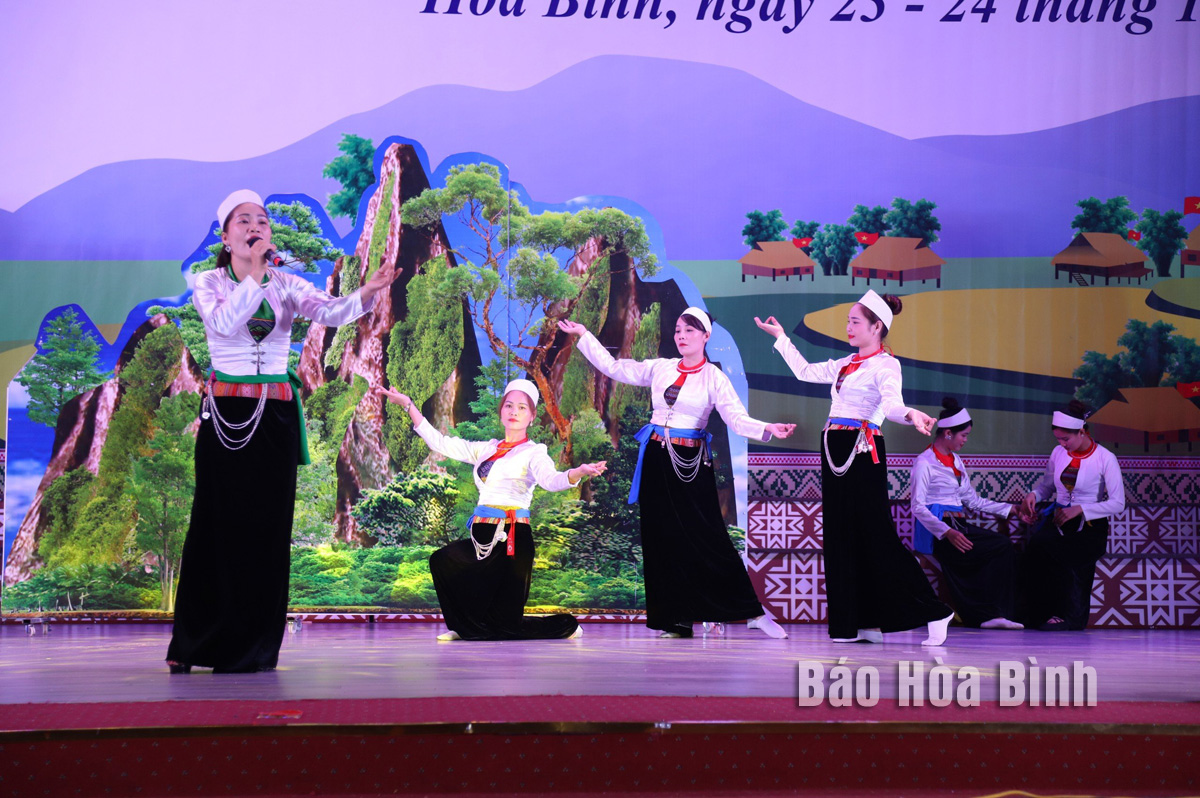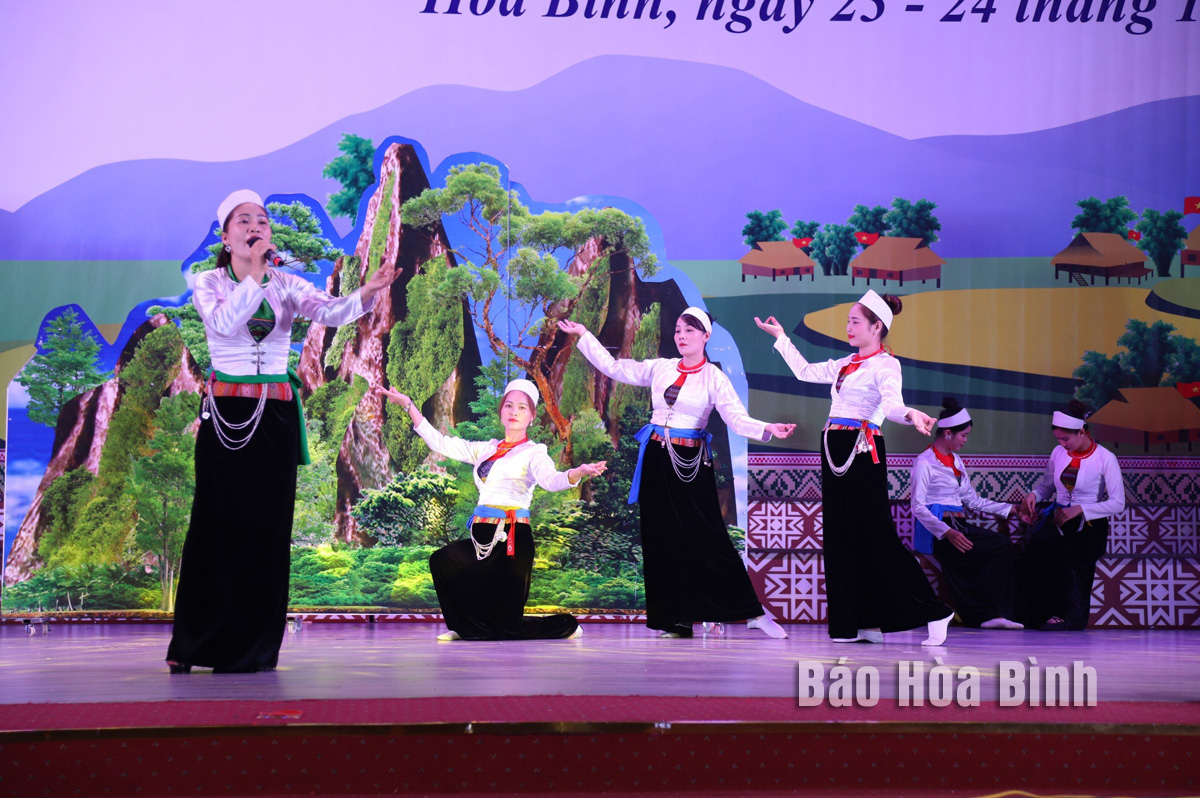
The recent 2023 folk art festival of ethnic minority groups in Hoa Binh province featured outstanding performance of songs and dances as well as reenactments of outstanding festivals, leaving good impression on folk art lovers.
An impressive performance of Lac Son district at the festival.
During the two-day festival, nearly 300 artisans and artists from 10 district-level localities across Hoa Binh showed their outstanding singing and dancing performances and reenacted some outstanding arts and festivals of their ethnic groups and localities. The event aimed to help preserve and bring into play cultural heritage values of local ethnic minorities.
Luu Huy Linh, Deputy Director of the provincial Department of Culture, Sports and Tourism and head of the festival organising committee, said that on the occasion of the Vietnam Cultural Heritage Day (November 23), the department stepped up the organisation of folk art festivals of ethnic minority groups at all levels.
As many as 80 of the 151 communal-level localities organised festivals with more than 16,000 performers, attracting over 40,000 spectators. Ten district-level festivals were also held with the participation of 10 communes, wards, and townships, 3,400 performers, and over 10,000 spectators. The provincial-level event featured performances by people of all age groups, including many holding the Meritorious Artist and People’s Artist titles.
In particular, part of traditional cultural rituals, festivals, and ceremonies were also reenacted, helping spectators gain a better understanding of cultural and religious identities of ethnic groups.
Linh went on to say that those festivals provided not only playgrounds for folk art groups but also occasions for local artisans and artists to show their skills, share experience, and improve their performing capacity. They helped enrich people’s spiritual life, maintain cultural identities of ethnic groups, and develop cultural activities in the community, thereby gradually meeting the public’s cultural enjoyment demand.
With an increasingly vibrant and widespread emulation movement aimed at building cultured residential areas and cultured families, Yen Thuy District has been making steady progress toward improving both the material and spiritual well-being of its people, while fostering a civilized, prosperous, beautiful, and progressive community.
Once lacking recreational spaces and community facilities, Residential Group 2 in Quynh Lam Ward (Hoa Binh City) has recently received attention for the construction of a new, spacious, and fully equipped cultural house. The project followed the model of state support combined with public contributions in both labor and funding.
The "All people unite to build cultural life" movement, which has been effectively integrated with Kim Boi district’s socio-economic development goals, is fostering a lively spirit of emulation across local residential areas, hamlets, villages, public agencies, and enterprises. In addition, through the initiative, traditional cultural values are being preserved and promoted, while community solidarity and mutual support in poverty reduction and economic development are being strengthened.
A working delegation of the Hoa Binh provincial People’s Committee led by its Permanent Vice Chairman Nguyen Van Toan on June 11 inspected the progress of a project to build the Mo Muong Cultural Heritage Conservation Space linked to tourism services in Hop Phong commune, Cao Phong district.
Born and growing in the heroic land of Muong Dong, Dinh Thi Kieu Dung, a resident in Bo town of Kim Boi district, in her childhood was nurtured by the sweet lullabies of her grandmother and mother. These melodies deeply imprinted on her soul, becoming an inseparable part of her love for her ethnic group's culture. For over 20 years, this love for her hometown has driven Dung to research, collect, and pass down the cultural values of the Muong people to future generations.
In the final days of May, the Ethnic Art Troupe of Hoa Binh Province organized performances to serve the people in remote, mountainous, and particularly disadvantaged areas within the province. These were not just ordinary artistic shows, but they were the meaningful journeys aimed at spreading cultural values, enhancing the spiritual life of the people and contributing to the preservation of ethnic minority cultural identities.



